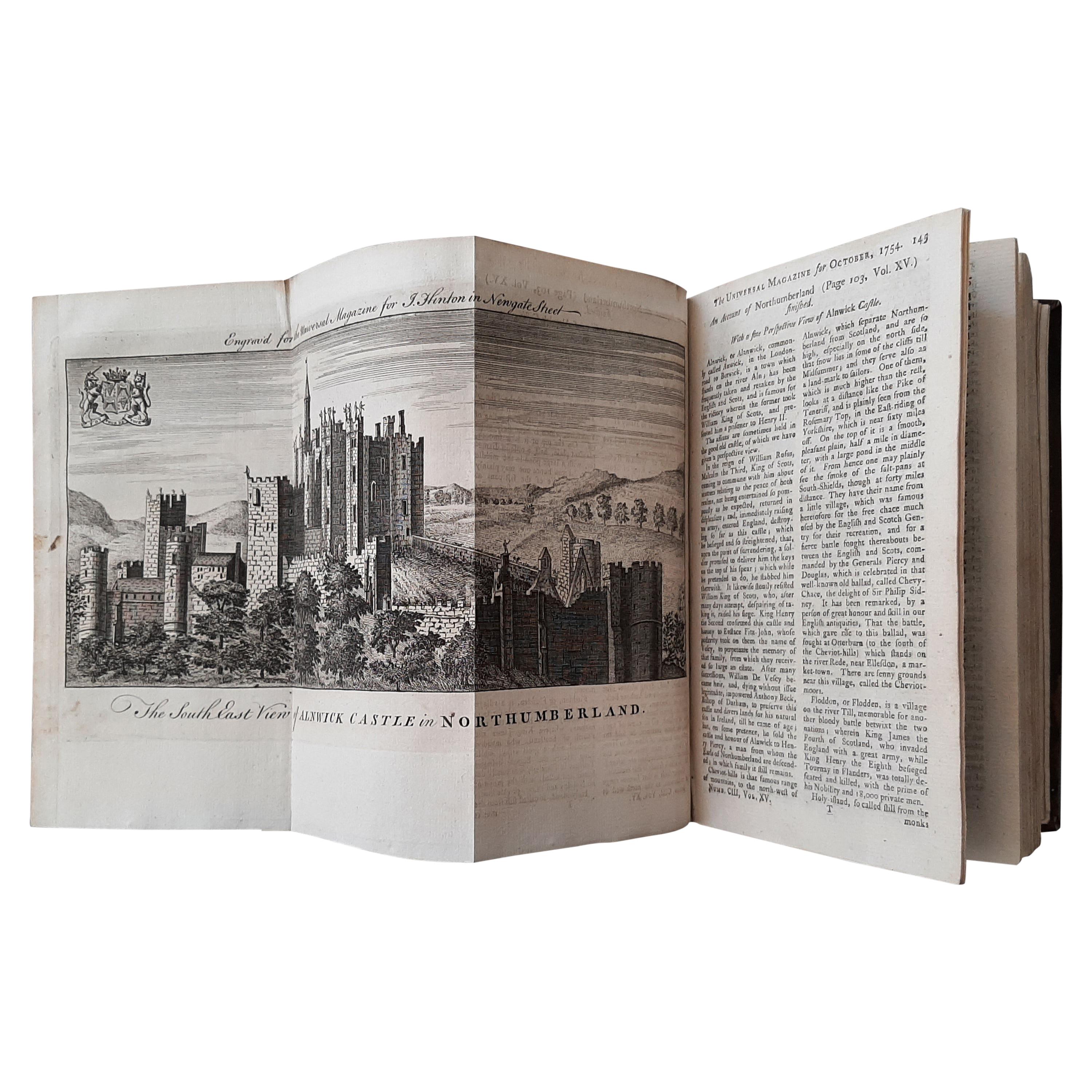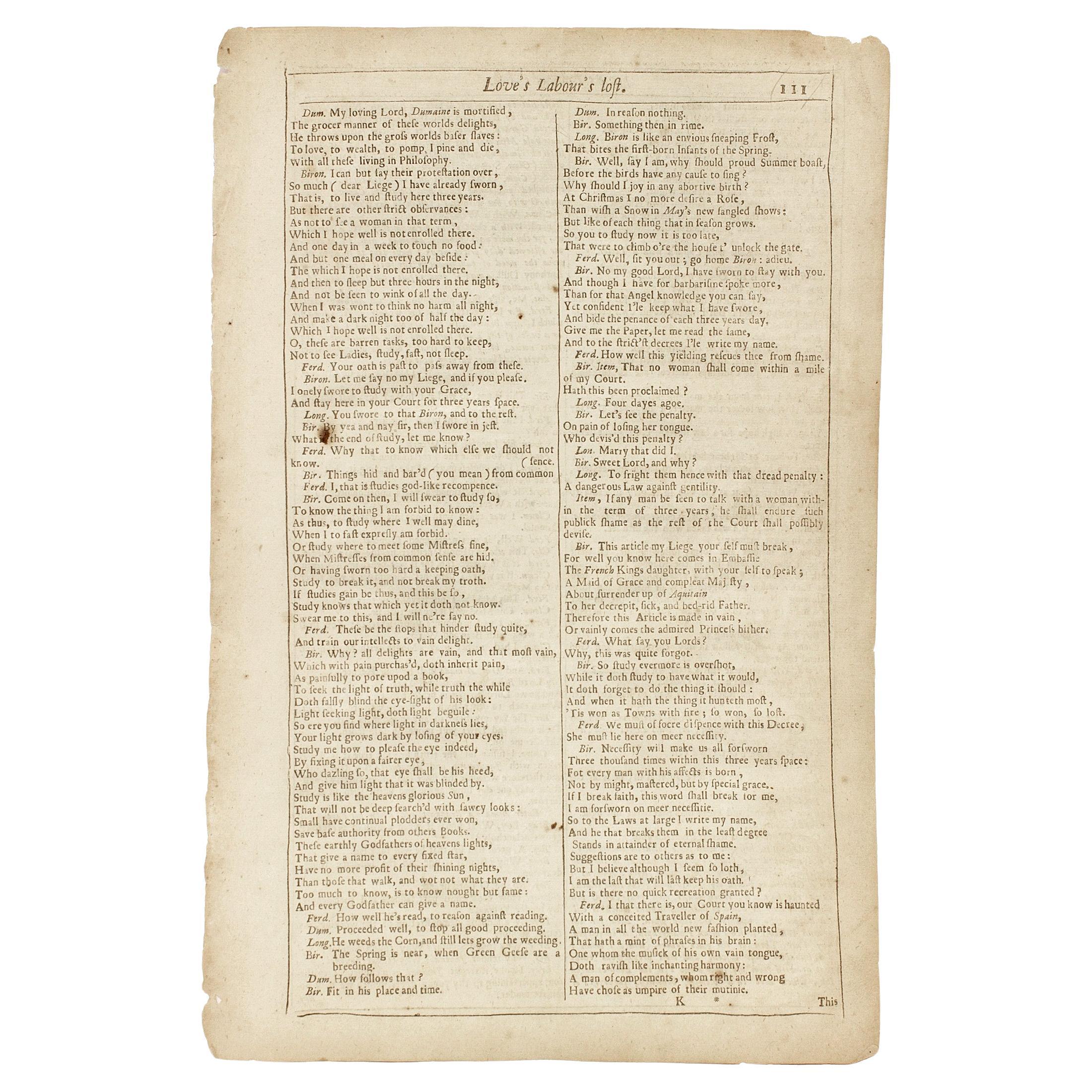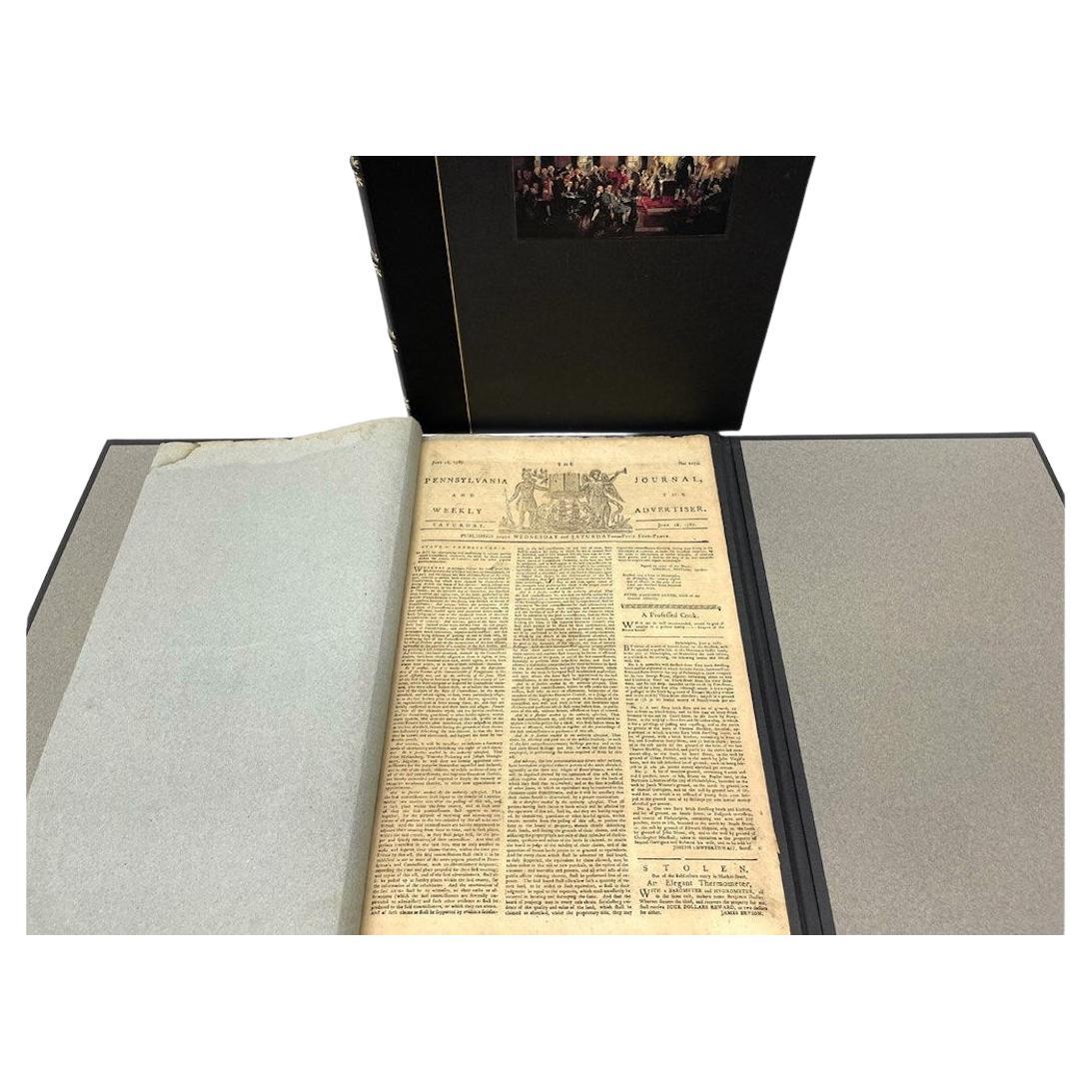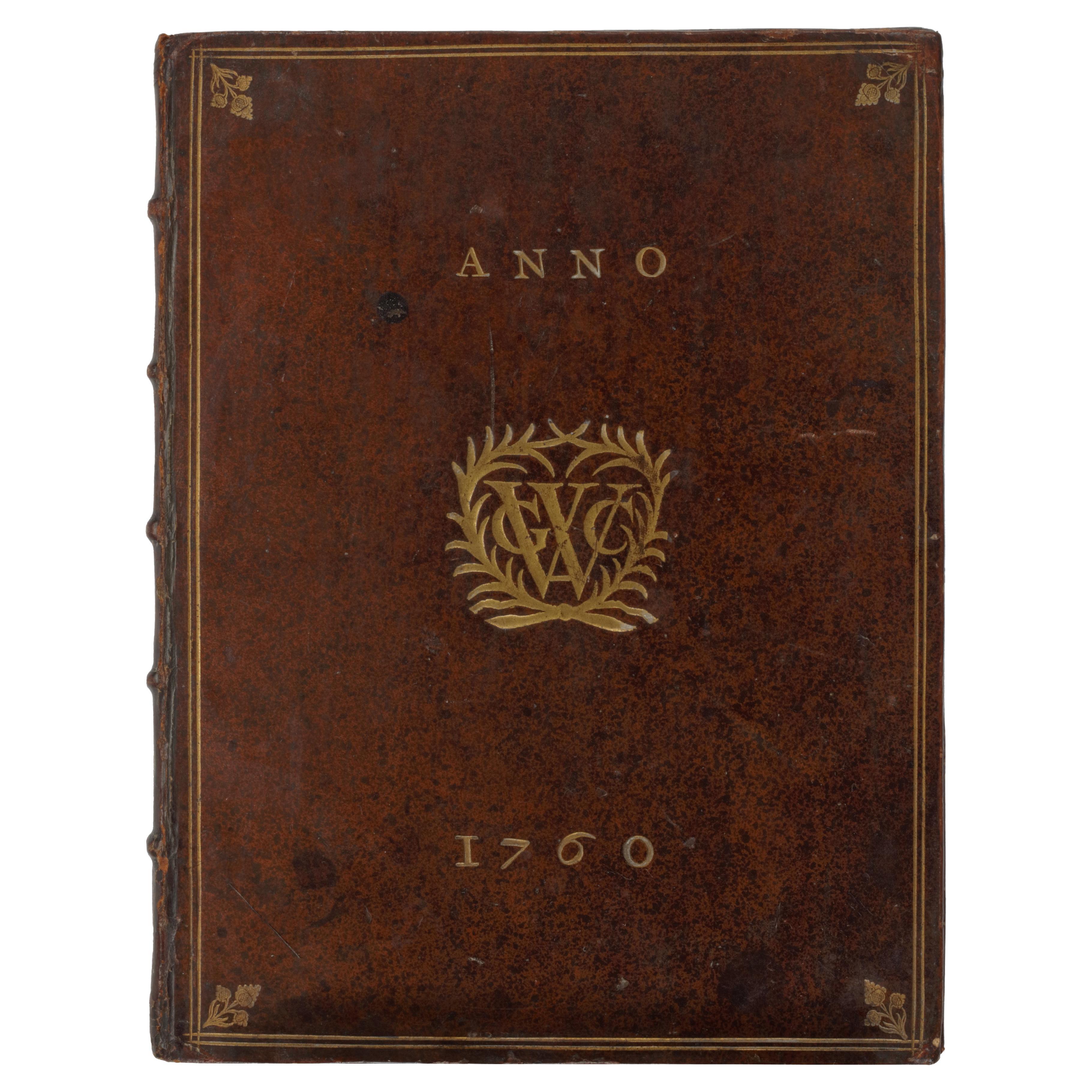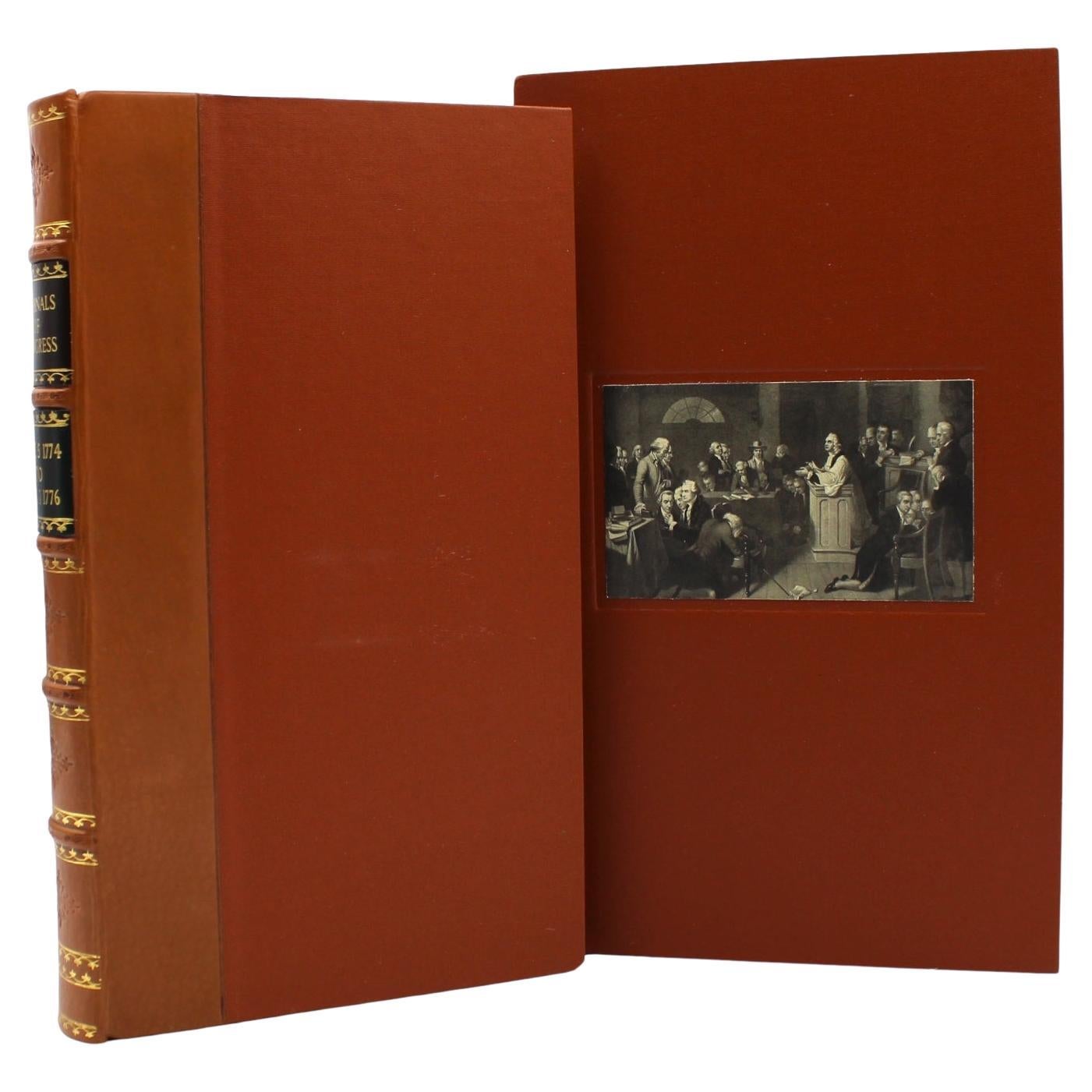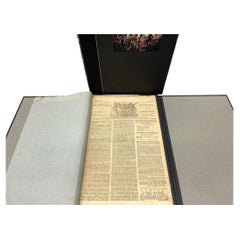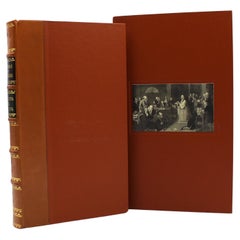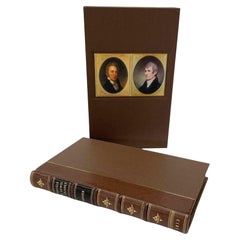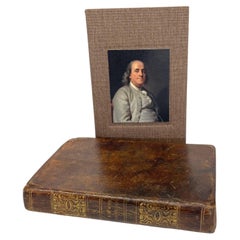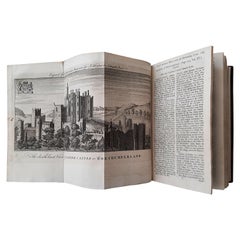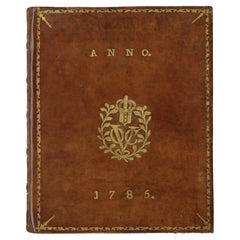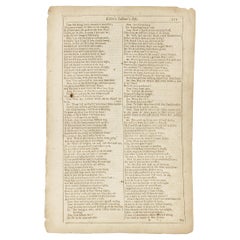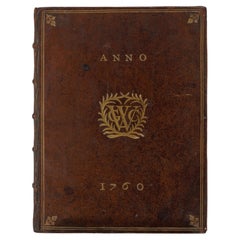Items Similar to The Gentleman's Magazine, with 1777 Flag Resolution, June 1783
Want more images or videos?
Request additional images or videos from the seller
1 of 21
The Gentleman's Magazine, with 1777 Flag Resolution, June 1783
$3,000
£2,277.97
€2,605.03
CA$4,191.44
A$4,661.79
CHF 2,434.24
MX$56,729.03
NOK 31,088.99
SEK 29,155.99
DKK 19,442.34
Shipping
Retrieving quote...The 1stDibs Promise:
Authenticity Guarantee,
Money-Back Guarantee,
24-Hour Cancellation
About the Item
Presented is an June 1783 issue of London's "The Gentleman's Magazine," containing significant historical content relating to the end of the Revolutionary War, the 1777 Flag Resolution, troop payment, Congress, British Parliament, and the “Dismemberment of America the Design of Providence." The magazine periodical was edited by “Sylvanus Urban” and printed in London by D. Henry at St. John's Gate. Issued as a small octavo, the pages of this paper bound magazine are numbered 457-543, indicating a continuance from previous 1783 monthly issues. The content inside this June 1783 issue is incredibly interesting, offering modern viewers and collectors a unique, historical look at English topics of interest at the tail end of the American Revolution.
“The Gentleman's Magazine” was a monthly magazine founded by Edward Cave in London, in January of 1731. It published monthly issues uninterrupted for almost 200 years, until 1922. It was the first to use the term “magazine” for a periodical and quickly became the most influential periodical of its age. Its impact even extended to North America where, in 1741, Benjamin Franklin’s similarly titled “General Magazine” was chiefly “patterned after London’s ten-year-old ‘Gentleman’s Magazine’” (Isaacson, 118).
With “The Gentleman’s Magazine,” Edward Cave created a monthly digest of news and commentary on any and all topics the educated public might be interested in, from commodity prices and parliamentary news to book reviews and poetry. The list of contents on the cover of this June 1783 issue varies greatly in topics, from the “Dismemberment of America early foretold" and “Capture of Hudson’s Bay,” to “Eastern Manner of treating Sheep,” “Proof that the Pole of the World has changed its Place,” and "Parliamentary Debates at large.” “The Gentleman’s Magazine” always included original content from a handful of regular contributors, as well as extensive quotations and extracts from other periodicals and books. Cave edited “The Gentleman's Magazine” under the pen name "Sylvanus Urban," as seen on this June issue’s printed front, and many contributors crafted their essays in the form of letters to the editor, addressed to “Mr. Urban.”
Halfway through this June 1783 issue is a long section on “American Intelligence” appearing on pages 528-529. The coverage is varied in topic but incredibly interesting. The authors report on the payment of American troops after the war: “Between the American army and the Congress the greatest harmony subsists. Gen. Washington has presented a petition from the army, requesting that each soldier should have either a portion of land allotted to him, full pay for five years, or half-pay for life. So equitable a proposal was immediately agreed to.” They also report that “Gen. Washington has requested permission of Congress to retire to a private station not stipulating a single condition for himself.” This was Washington’s demonstration of his commitment to the principles of the newly formed nation, particularly the separation of powers and civilian authority over the military. Already, the cult of personality surrounding George Washington is evident, with early reporting that an eager Congress is ready to celebrate and honor their great Commander in Chief: “The American Congress has passed a vote, expressing it ‘incumbent on them to testify their sense of the eminent services of Gen. Washington.’”
There is reporting of the ratification of the Articles of Peace, as well as further reiteration “that the seventh article of the Provincial Treaty between Great Britain and the United States of America be strictly attended to and complied with by all persons whatsoever under his command.” This issue discusses the eventual return of the British military, “whose fray at New-York is grumbled at by the multitude” and also urges the return of American papers, deeds, archives, and records, “which in the course of war may have fallen into the hands of any of the King’s officers.” Also notable in this “American Intelligence” article is the printing of the Flag Act of 1777: “Resolved, That the flag of the 13 United States be thirteen stripes, alternate red and white: That the Union be thirteen stars, white, in a blue field, presenting a new constellation.”
CONDITION:
Overall very fine condition. This June issue was previously disbound from a volume, with evidenced wear at the spine. Light overall toning. Only minimal spotting and a few creases throughout. Illustrated, including a beautiful full page engraving “To the Master, Wardens, Court of Assistants & Livery of the Worshipful Company of Vintners" as well as a full page engraving of the “Antiquities as Leicester.”
The magazine is presented in a new archival 1⁄4 leather and cloth clamshell case, with raised bands, gilt tooling, and gilt titles to the spine, and a printed inlay of the “Gentleman’s Magazine” cover on the front. Included with the clamshell case is a matching, cloth covered chemise, to hold and protect the magazine.
Magazine Dimensions: 8 3/8" H x 5 3/16" W x 3/16" D. Clamshell Dimensions: 9 7/8" H x 6 3/8" W x 1 5/16" D.
Accompanied by our company's letter of authenticity.
- Dimensions:Height: 9.88 in (25.1 cm)Width: 6.38 in (16.21 cm)Depth: 1.32 in (3.36 cm)
- Style:American Colonial (Of the Period)
- Materials and Techniques:
- Place of Origin:
- Period:1780-1789
- Date of Manufacture:1783
- Condition:Additions or alterations made to the original: Presented in a new archival 1⁄4 leather and cloth clamshell case, with raised bands, gilt tooling, and gilt titles to the spine, and a printed inlay of the cover on the front. Included with the clamshell case is an archival cloth covered chemise. Wear consistent with age and use. Minor structural damages. Minor fading.
- Seller Location:Colorado Springs, CO
- Reference Number:Seller: BK11731stDibs: LU909744688272
About the Seller
4.9
Platinum Seller
Premium sellers with a 4.7+ rating and 24-hour response times
Established in 2010
1stDibs seller since 2011
461 sales on 1stDibs
- ShippingRetrieving quote...Shipping from: Colorado Springs, CO
- Return Policy
Authenticity Guarantee
In the unlikely event there’s an issue with an item’s authenticity, contact us within 1 year for a full refund. DetailsMoney-Back Guarantee
If your item is not as described, is damaged in transit, or does not arrive, contact us within 7 days for a full refund. Details24-Hour Cancellation
You have a 24-hour grace period in which to reconsider your purchase, with no questions asked.Vetted Professional Sellers
Our world-class sellers must adhere to strict standards for service and quality, maintaining the integrity of our listings.Price-Match Guarantee
If you find that a seller listed the same item for a lower price elsewhere, we’ll match it.Trusted Global Delivery
Our best-in-class carrier network provides specialized shipping options worldwide, including custom delivery.More From This Seller
View AllThe Pennsylvania Journal and The Weekly Advertiser, Issued June 16, 1787
Located in Colorado Springs, CO
Presented is an June 16, 1787 issue of Philadelphia's "The Pennsylvania Journal, and The Weekly Advertiser," containing coverage of the Constitutional Convention. The magazine period...
Category
Antique 1780s American Federal Books
Materials
Leather, Fabric, Paper
Journals of the First and Second Continental Congress, by R. Aitken, Vol I, 1776
Located in Colorado Springs, CO
Journals of Congress. Containing the Proceedings From Sept. 5. 1774. to Jan. 1. 1776. Philadelphia: Printed and Sold by R. Aitken, 1777. Volume I. First Edition. 8vo. Rebound in ¼ br...
Category
Antique 1770s American American Colonial Books
Materials
Leather, Fabric, Paper
An Interesting Account of the Voyages and Travels of Captains Lewis and Clarke
Located in Colorado Springs, CO
Fisher, William. An Interesting Account of the Voyages and Travels of Captains Lewis and Clarke, in the Years 1804-5, & 6... Baltimore: P. Mauro, 1813. 12mo. Illustrated. Rebound in...
Category
Antique 1810s American Federal Books
Materials
Leather, Paper
The Works of Dr. Benjamin Franklin, with His Life, Written by Himself, 1835
By Benjamin Franklin
Located in Colorado Springs, CO
Franklin, Benjamin. The Works of Dr. Benjamin Franklin, Consisting of Essays, Humorous, Moral, and Literary, with His Life, Written by Himself. Exeter: J & B Williams, 1835. In origi...
Category
Antique 1830s American Federal Books
Materials
Leather, Fabric, Paper
History of the Discovery of America by Henry Trumbull, 1832
Located in Colorado Springs, CO
Trumbull, Henry. History of the Discovery of America: Of the Landing of our Forefathers at Plymouth, and of Their Most Remarkable Engagements with the Indians in New-England, From Th...
Category
Antique 1830s American Early Victorian Books
Materials
Leather, Fabric, Paper
The Wealth of Nations, A New Edition, by Adam Smith, Three Volume Set, 1812
Located in Colorado Springs, CO
Smith LL.D F.R.S., Adam. An Inquiry into the Nature and Causes of the Wealth of Nations. A New Edition, to Which is Prefixed an Account of the Life of the Author, and A View of His D...
Category
Antique 1810s English George III Books
Materials
Leather, Paper
You May Also Like
Vol 15 of 'The Universal Magazine of Knowledge and Pleasure' by Hinton '1754'
Located in Langweer, NL
Vol XV 'The Universal Magazine of Knowledge and Pleasure' by John Hinton, published 1754. The Universal Magazine of Knowledge and Pleasure was a per...
Category
Antique Mid-18th Century Books
Materials
Paper
$766 Sale Price
20% Off
A Dutch East India Company VOC almanack for the year 1785
Located in Amsterdam, NL
"D’Erven Stichter’s Comptoir Almanach, Op ’t Jaar onzes Heeren Jesu Christi, 1785. Voorzien met alle de Jaar-, Paarden-, Beesten-, en Leermarkten, alsmede de Vacantien, het Varen der...
Category
Antique 18th Century Dutch Books
Materials
Leather, Paper
Shakespeare. Love's Labour's Lost - FOURTH FOLIO - 1685 - page 111-112.
Located in Hillsborough, NJ
AUTHOR: SHAKESPEARE, William.
TITLE: The Works of William Shakespeare. (Love's Labour's Lost) - page 111-112.
PUBLISHER: London: Printed for H. Herringman, E. Brewster and R. Bent...
Category
Antique 1680s British Books
Materials
Paper
A Dutch West India Company GWC almanack for the year 1760
Located in Amsterdam, NL
"D'Erven Stichter’s Comptoir Almanach, Op ’t Schrikkel-Jaar onzes Heeren Jesu Christi, 1760, voorzien met alle de Jaar-, Paarden-, Beesten-, en Leermarkten Alsmede de Vacantien, het ...
Category
Antique 18th Century Dutch Books
Materials
Leather, Paper
Shakespeare. The London Prodigal - FOURTH FOLIO - 1685 - page 219-220.
Located in Hillsborough, NJ
AUTHOR: SHAKESPEARE, William.
TITLE: The Works of William Shakespeare. (The London Prodigal) - page 219-220.
PUBLISHER: London: Printed for H. Herringman, E. Brewster and R. Bentl...
Category
Antique 1680s British Books
Materials
Paper
Crafts of Comfort and Style: Upholstery and Furniture Design in the 1760s
Located in Langweer, NL
Crafts of Comfort and Style: Upholstery and Furniture Design in the 1760s from Diderot's Encyclopédie
This original hand-colored antique engraving is from the "Encyclopédie, ou Dict...
Category
Antique 1760s Prints
Materials
Paper
$306 Sale Price
20% Off
Free Shipping
More Ways To Browse
Antique Life Magazines
Early American New England Furniture
Antique Sheep Print
Used Furniture North Bay
Antique British Flag
Antique Union Cases
Antique Military Memorabilia
Colonial New England
Antique Deed
English Leather Master
Antique Chemise
Antique Hudson Bay
Used Office Furniture Providence
George Washington Memorabilia
John Powers
Revolutionary War Memorabilia
Voting Box
Antique Knife Sheath
